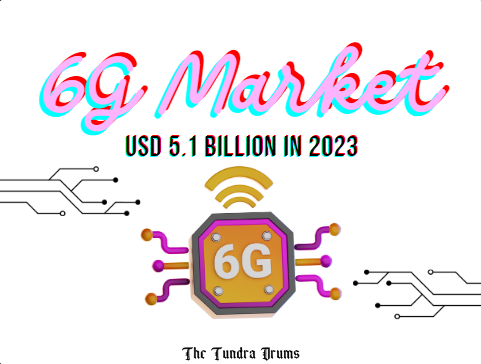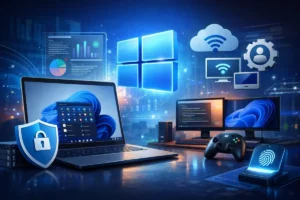6G technology is the next generation of wireless communication that promises to be much faster and more powerful than 5G. Expected to deliver data speeds up to 100 times faster than 5G, 6G will make downloading movies, streaming videos, and gaming incredibly smooth and quick.
Real-time applications like remote surgeries and self-driving cars will become more reliable with ultra-low latency. The network will support up to 10 million devices per square kilometer, seamlessly connecting more gadgets and appliances.
6G aims to expand coverage to rural and remote areas, making high-speed internet accessible to more people and driving innovation in AI, smart cities, and beyond.
6G Market Size and Growth Projections

The global 6G market is poised for significant growth over the next decade. In 2023, the market was valued at approximately USD 5.1 billion.
It is projected to experience substantial expansion, reaching around USD 40.2 billion by 2030. This growth represents a compound annual growth rate (CAGR) of 34.2% from 2023 to 2030.
Beyond 2030, longer-term projections provide further insights into the market’s potential. Some estimates suggest that the 6G market could grow from USD 6.70 billion in 2024 to USD 57.55 billion by 2034, reflecting a CAGR of 24% over this period.
Other forecasts are even more optimistic. They anticipate that the market could be worth approximately USD 98.2 billion by 2033, starting from USD 5.8 billion in 2023, indicating a CAGR of 32.7%.
Here’s a summary of the projected growth in the 6G market:
| Year | Market Value (USD Billion) | CAGR (%) |
| 2023 | 5.1 | – |
| 2030 | 40.2 | 34.2 (2023-2030) |
| 2033 | 98.2 | 32.7 (2023-2033) |
| 2034 | 57.55 | 24 (2024-2034) |
6G Technology Performance Metrics
- Faster Data Speeds: 6G will provide users with data speeds of up to 1,000 Mbps, which is ten times faster than the current 5G speeds.
- Higher Peak Data Rates: 6G could reach peak speeds up to 50 times faster than 5G, thanks to its use of higher frequency bands ranging from 95 GHz to 3 THz.
- More Connected Devices: 6G will support a connection density of up to 10 million devices per square kilometer, compared to 5G’s 1 million devices per km², allowing more devices to connect and share data simultaneously.
How Will 6G Technology Change the Way We Connect and Innovate?

6G technology will be much faster and more powerful than 5G, greatly improving how we connect and innovate. With higher speeds, low delays, and the ability to support many devices, 6G will enhance edge computing, which processes data closer to its source. It will play an important role in the future of IoT and smart cities, making technology more efficient and accessible for everyone.
Unbelievable Speeds:
6G is expected to be up to 100 times faster than 5G. This means downloading a full-length HD movie could take just a second. With such high speeds, streaming videos, playing online games, and using virtual reality will become smoother and more immersive.
Ultra-Low Latency:
Latency is the delay before data starts transferring after you send a command. With 6G, latency will be almost zero. This means that real-time communication will be better than ever, and it is crucial for remote surgery, self-driving cars, and online gaming.
Massive Connectivity:
6G will connect billions of devices more efficiently. This is perfect for the “Internet of Things” (IoT), where everyday objects like refrigerators, cars, and clothing can connect. This will lead to more innovative homes, cities, and industries, making our lives more convenient and our businesses more efficient.
Enhanced AI Integration:
6G will support better integration with artificial intelligence (AI). It will allow for smarter, more responsive networks that quickly adapt to users’ needs. For example, traffic lights could change based on real-time traffic conditions, or health monitoring devices could alert doctors immediately if something is wrong.
Expanded Coverage:
Unlike 5G, which mainly focuses on urban areas, 6G aims to provide coverage everywhere, including remote and rural areas. It would mean reliable internet access for people struggling with poor connectivity, helping bridge the digital divide.
New Innovations:
The high speeds, low latency, and massive connectivity of 6G will pave the way for new technologies we can’t even imagine yet. From advanced augmented reality (AR) experiences to new medical technologies, 6G will open up possibilities.
Final Words
6G technology is set to transform the world of connectivity and innovation. It has incredible speed, low latency, and the ability to support many devices. This next generation of wireless communication will enable new advancements in artificial intelligence, smart cities, and remote access, making technology more accessible and efficient for everyone, no matter where they are. As the 6G market grows rapidly, it promises to bring about significant changes that will shape the future of how we live, work, and interact with technology.










